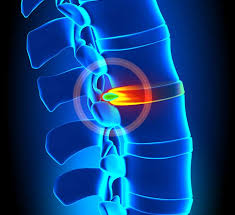Back Pain In Nelson Bay? What You Need To Know
January 18, 2022

Back pain is very common among the population. Research has found that 4/5 people will experience significant back pain in their lifetime. Back pain is often very concerning to patients because of the intense pain, strange symptoms and disabling nature of the injury. An explanation and education about the injury can eliminate a lot of this concern.
This article will give a brief overview of different types and aspects of lower back pain.
Back pain can be caused by the classic bending over and lifting a heavy object, chronic overload, poor positioning over long periods, biomechanical abnormalities, and trauma including previous surgeries.
The severity and symptoms of lower back pain vary greatly depending on each individual patient. Different causes and different types of back pain affect what symptoms the person experiences. Common descriptions of pain include sharp, dull, shooting, burning, stabbing and aching. Symptoms can be felt in the buttock, hip and down the leg all the way to the foot.
In some cases, numbness, pins and needles, a decrease in strength and decreased sensation can occur. Aggravating factors depend on the patient but can include sitting, bending, sustained positions, walking, standing, twisting or sometimes any movement of the back. These can be quite disabling and scary for patients and that is completely normal.
There are many different types of back pain that will be briefly described here.
Types of Back Pain
Discogenic pain is when the disc has been irritated or injured. Pain is often aggravated by bending and sitting. This pain can refer down the buttock and leg.
Joint stiffness is when the joints in your back aren’t moving like they should. Often feels stiff and painful and often occurs with other types of back pain. This may be called facet joint pain or facet arthropathy and is often found in arthritic back pain.
Radiculopathy refers to the nerve being irritated or compressed where it exits the spine. This pain will often be described as burning or shooting and can include weakness, decreased sensation, pins and needles and numbness.
Referred pain (radicular or somatic) is pain felt in one location that originates from somewhere else. Sometimes the pain isn’t felt in the back but somewhere in the leg that the area typically refers pain to. This will be reproduced with certain back movements and can be the cause of a leg pain that doesn’t have a mechanism of injury.
Back pain doesn’t always originate from the back and other areas can refer pain to the leg and buttock. The hip and Sacro-Illiac Joint (where the pelvis connects to the spine) can cause similar symptoms and be misdiagnosed. Back pain can also originate from serious pathologies including fractures, cancer, infections, joint diseases, referred pain from organs and blood vessels.
Prevention is based around flexibility improvements in surrounding areas, strengthening relevant weaknesses, correcting biomechanical faults (lifting, sitting, walking, running, etc and lifting smart ie. using help when its there, holding weight close to the body and being aware of your capacity).
The best treatment for back pain which is supported by guidelines from around the world is physiotherapy. Physiotherapy treatment involves education, reassurance and activity modification, retraining movements, manual therapy including mobilisation and manipulation, positioning education, taping or bracing and addressing the cause of the original injury.
Common misconceptions
- Slipped disc – Disc’s do not slip, they are strongly attached to the vertebra above and below. They can bulge/herniate but certainly do not slip out of place. The disc can be thought of as a shock absorber between the bony vertebral bodies. They have a fibrous outer wall and a gelatinous nucleus. Even loading on the disc within it’s physiological limits is great, but when we load a specific part of the disc repeatedly in a non-uniform manner, we can create deformation and movement of the fluid within the disc in the opposite direction.
This is a little like placing water into the skin of a water bomb, it stretches and deforms. Discs can bulge but this is a fairly normal thing and the extent of bulging will largely depend on the loading at any given time.
- Sciatica – Sciatica is a term that is commonly used inappropriately. Firstly, Sciatica is not a diagnosis, it is a symptom. It is caused by compression of the nerve either in the back or in the buttocks. Pain running down your leg is not necessarily sciatic pain. As mentioned earlier in this article, pain can be referred from your back without any nerve involvement.
- Disc bulges are for life – Disc bulges and herniations CAN heal on their own and without surgical intervention. Many studies have scanned acute lower back disc bulges and then again months and years later.
A recent analysis and review of the research found that approximately 2/3 of all disc herniations heal on their own. This means that if you have a disc bulge in your back it has a great chance of healing without the need of surgery.
Written by: Scott Ward
References
Ming Zhong, M. D., & Liu, J. T. (2017). Incidence of spontaneous resorption of lumbar disc herniation: a meta-analysis. Pain physician, 20, E45-E52.
